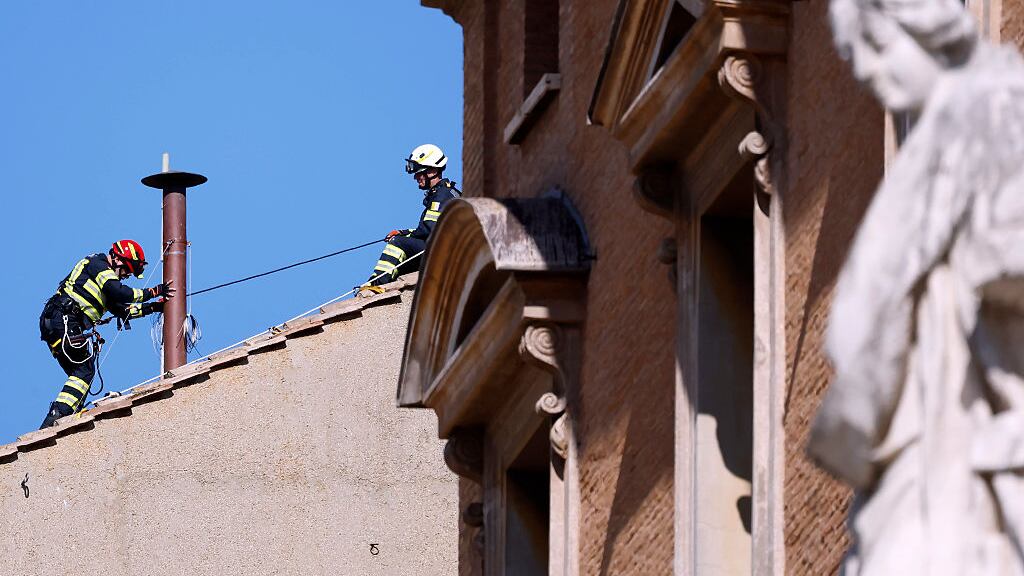The Vatican Fire Department installed the traditional chimney on the roof of the Sistine Chapel on Thursday, from where the smoke will be emitted to announce whether the cardinals have chosen the next pope. The eagerly awaited conclave will begin on May 7 at 4 pm Italian time, with the participation of the eligible cardinals, who will meet behind closed doors to select the new leader of the Catholic Church.
PUBLICIDAD
According to the protocol, starting on May 8th, twice a day - in the morning and in the afternoon - smoke will be observed coming out of the chimney: black if a decision has not been reached, and white if at least 89 cardinals have agreed on the name of the new pontiff.
PUBLICIDAD
In the Sistine Chapel, two ovens are installed for the conclave, one for burning the electoral ballots and another for generating smoke. Several chemical compounds are mixed to produce either black or white smoke.
The white smoke, a symbol of consensus and that there is a new pope, will be awaited by thousands of faithful gathered in St. Peter’s Square, as well as by millions of people around the world who will follow the process through the media.
Why is the conclave held in the Sistine Chapel?
The first conclave in the Sistine Chapel was held in 1492 and it has been the permanent seat of this process since 1878.
The Sistine Chapel is located within the Apostolic Palace in the Vatican and, in addition to its symbolic importance, is chosen for the conclave due to its strategic location and its enclosed structure, which ensures absolute isolation during the voting process.
This space becomes a safe and private environment, allowing the cardinals to make a decision without external interference, thus preserving the secrecy and tradition surrounding this election.
During the conclave, the elector cardinals are literally locked up, a practice that gives rise to the term “conclave” from the Latin “cum clave” (with + key). They remain without contact with the outside world until a consensus is reached. To ensure privacy, special systems are installed and any access to external communications is blocked.
If a candidate does not achieve two-thirds, the conclave is suspended until the next day. The cardinals are taken by bus to the Domus Sanctae Marthae, where the same conditions of isolation from the outside world are maintained.
